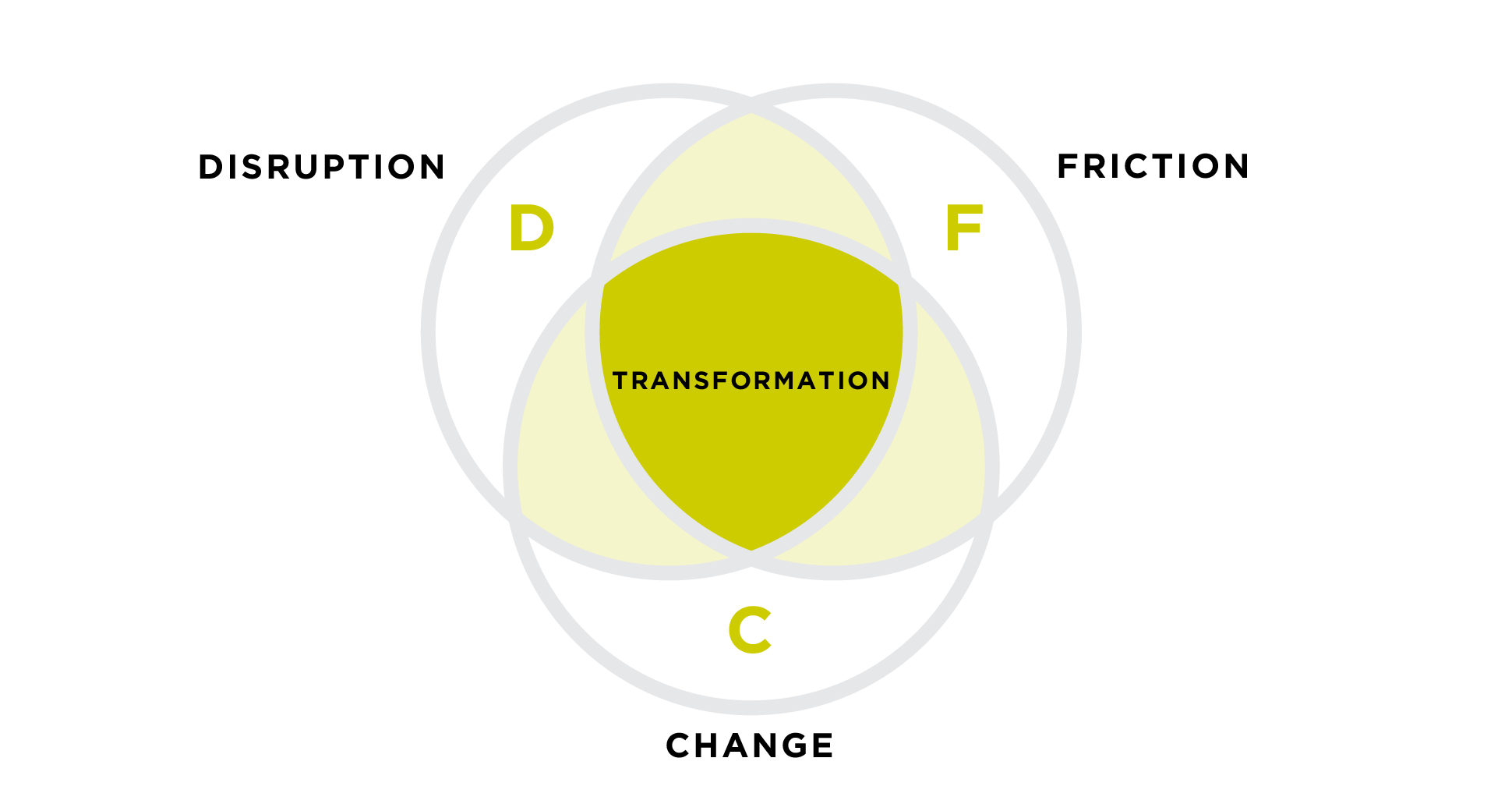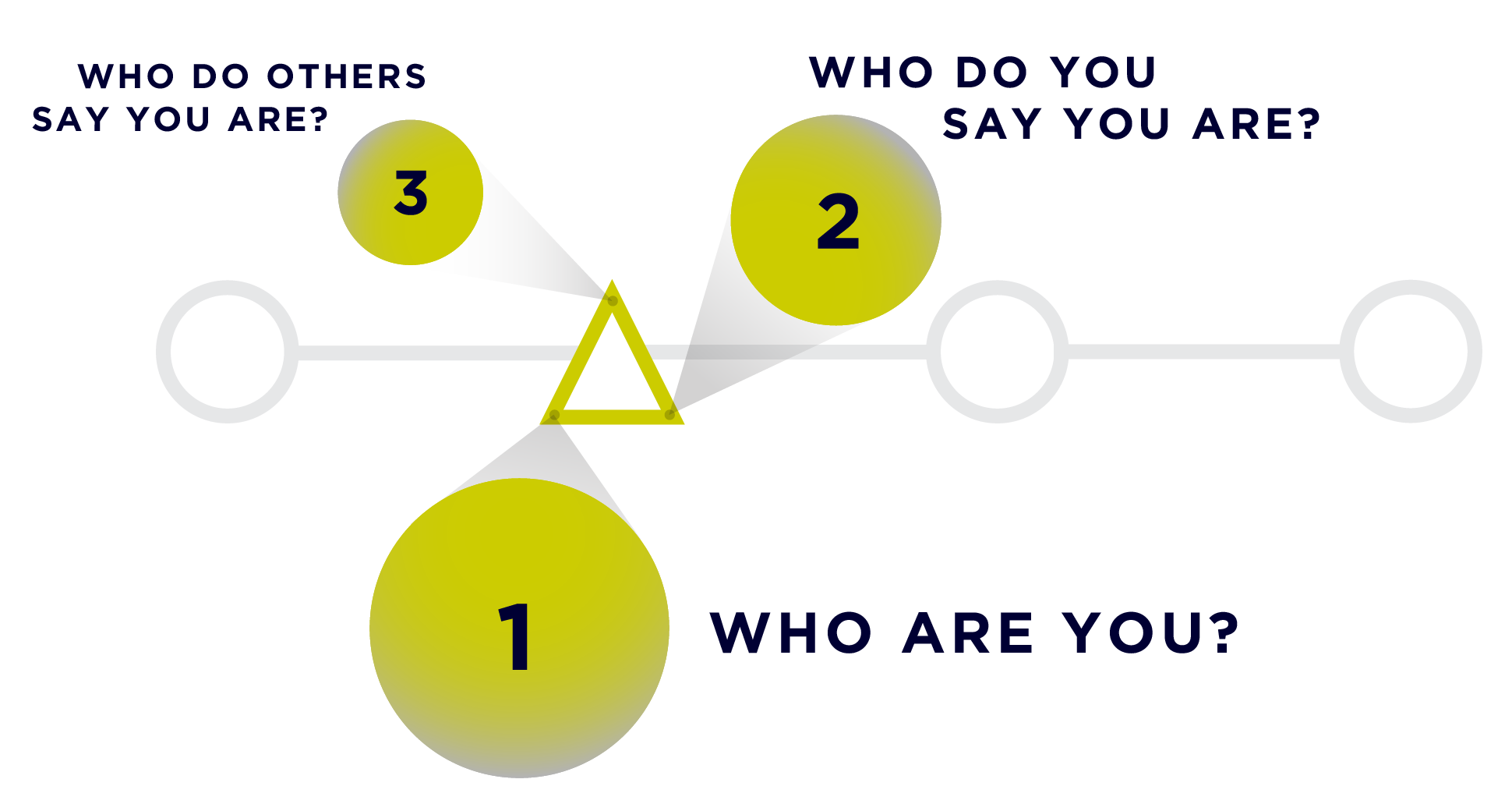Transformation Sounds Great…Until Your Institution Has to Do It
Higher ed institutions are, in theory, well acquainted with the notion of “transformation.” After all, they are in the business of transforming lives—the lives of their students. This charge is not insignificant; certainly the transformative process experienced at a college or university can be the most influential impetus for positive change and growth in a person’s life. In fact, you’ll find the word “transformation” as a common staple of higher ed marketing language, if not within mission statements. It’s a sentiment that at one time carried tremendous weight, though now it might be more akin to a hotel chain proudly stating that they serve free breakfast—while important, it is an expectation, not a distinctive feature. Still, if you are a prospective student of any age, you can be confident that the college or university you choose will provide you with a transformative experience that will shape you as an individual and member of society.
Yet, in spite of higher ed’s strong association with transformation and its clear adeptness in transforming the lives of others, it’s curious that institutions sometimes struggle to foster and bring to fruition their own transformations. An inability for an organization to transform, particularly in an environment as dynamic (and saturated) as higher ed, suggests stagnation at best; a death sentence, at worst. Institutions should strive to be as adroit in bringing forth their own transformations as they are in transforming the lives of their students.
Why Transform?
In most contexts, “transformation” sounds, well… cool and progressive and perhaps slightly enigmatic. To share with others that you are “in the process of a transformation” is a declaration often met with warm regard. People generally love the idea of transformation.
However, implementing transformation within the organizational structure of an institution is a different story. A fond consideration of the notion of transformation isn’t enough to guarantee buy-in from everyone on campus. It is easier (and quite comforting) to think: if it ain’t broke, don’t fix it, and not every institution is struggling. But considering how competitive the world of higher ed can be, institutions who wish to thrive and survive long-term cannot afford to be complacent. By and large the institutions who are adaptive and proactive in their approach to providing education are the ones that will have the greatest success. The list of schools that succeed while falling behind the curve and holding steadfast in their commitment to outdated methods, or firmly congealed in their state of being, is indeed short (with perhaps the exception being the few powerhouses who can rest comfortably on their prestigious name, laurels and bountiful endowments).
Your college or university offers students transformative opportunities because of a wholehearted commitment to positioning students for lives of greater achievement and fulfillment. As a representative of your institution, you would encourage any of your students on your campus to lean into the challenges they may face, embrace any of the new experiences they may encounter and welcome the changes that may occur in their worldview—thus, transformation. You support this process because you know your students will be better for it in the long run, and therefore, be more equipped to face an uncertain future. Why not recognize the inevitable uncertainty your own institution faces?
The Conditions of Transformation
A recent episode of the McKinsey Quarterly podcast from McKinsey & Company offers one of the most concise and actionable descriptions of the conditions necessary for transformation. As the title of the episode states, the hallmarks of a true transformation are: disruption, friction and change. The experts in this podcast speak to their knowledge regarding transformation in a business organization, but undoubtedly the insight offered applies to higher ed institutions.

Disruption
Many organizations fail to realize that true transformation is not about adjustments implemented in short, unobtrusive steps over a long period of time. The truth is, transformation is unapologetically disruptive. Often, organizations desire transformation, but they have trepidation about disturbing the current way of doing things. Yet transformation will not begin until a disruption in the organization has occurred.
Friction
Initial attempts to enact transformation within an organization will be met with skepticism, and perhaps outright resistance. Friction is inevitable. But as Stephen Hall, a senior partner at McKinsey & Company, suggests: friction and tension are “necessary co-travelers to delivering a true transformation of the [organization].” Challenging the normal way of doing things is an integral part of the process. If you don’t feel the friction, you’re likely not causing much of a transformation.
Change
Disruption and friction are effective because they provide the setting that allows for great change to occur. But if, in the pursuit of transformation, the organization implements internal disruption, the knee-jerk reaction and instinct will be to quickly repair that disruption and immediately revert back to how things were. However, this moment is precisely the ideal opportunity to offer and enact change. The final step toward transformation occurs only when the organization and its constituents see the need for change, and then commit to change, in spite of the uncertainties and unknowns.
How to Navigate Transformation on Your Campus
While a knowledge of the ingredients for true transformation is advantageous, a deliberate strategy for achieving transformation is essential.
Start with Target Setting
One common pitfall when it comes to bringing about transformation is an attempt to begin the process blindly. You wouldn’t disrupt and shake-up your entire organization just for the sake of doing so, would you? Have a target. Know what you’re aiming for. What will your institution look like after the transformation is complete? And not just in qualitative terms, but—when applicable—in quantitative terms, too.
Don’t settle for what you think is most likely or readily achievable. An attempt to thwart what you perceive to be naivety in where you set the bar will leave you woefully short of maximizing your full potential. At this stage, the discomfort sets in. But without some suspension of disbelief in what your institution can achieve, you will struggle to even get the ball rolling.
Commit to an Agenda
Having a course of action is important. Target-setting gives you an end goal. Now the next step is to fill in the rest of the map so that there is little ambiguity in the route you’ll take to reach your destination. Know the steps and the plan you will follow during the transformation process. Likely this agenda includes an assignment of transformation-related roles and responsibilities to members of your team. Checkpoints along the way not only ensure progress, they fuel motivation. Accountability and discipline will help embolden all those involved to make decisions that support the change.
With more than 26 years of experience working with clients in higher education, RHB helps institutions proficiently chart out their agendas for transformation. We’ve developed services like Journey Mapping and Experience Mapping undergirded by our distinctive Three Satellite approach and philosophy of Coherence, specifically to aid in this process. Our engagements with clients and the implementation of these services sparks some of the most powerful transformations that their institutions have experienced.
Don’t Let Constructive Challenges become Confrontational Conflicts
The line between positive friction and negative conflict is a fine one. Remember, the goal of disruption is simply to make way for change—we’re not going for scorched-earth destruction here. Yes, the process will include challenging some team members, and on occasion, calling out the few individuals who—perhaps quite unintentionally—are serving as road blocks in your path to progress. But avoid using the dynamite when a firecracker will do. Pick your battles, and appreciate that change is hard for everyone, even those 100 percent on-board, particularly when disruption requires unearthing a decades-long precedent for doing things that has rooted firmly into position.
Seek Out Independent Perspective
Even the individuals most committed to transformation within your institution may struggle to be objective enough to eschew the pitfalls of their old paradigms. The difficulty in change—as organizations and as individuals—is that we are not always objective enough to see where we are stifling our own progress, or where our greatest potential for change may lie.
An outside, independent voice will not be beholden to the traditions that you cling to, particularly the ones that no longer serve your institution; nor will they be tempted to advise you to follow what is tried-and-true. Instead, they will look at your organization with a fresh set of eyes, quickly point out the blind spots in your own vision, and help you untangle ropes of old behaviors and customs that are preventing you from climbing toward your high aspirations.
Closing Thoughts
To protect the livelihood of your institution, a transformation must occur. It may not be now, but know that somewhere in your (distant, maybe, but more likely near) future, your institution’s survival will be contingent on its ability to transform. Don’t be so cavalier to think that transformation is simply a buzzword, or the latest trend in higher ed that institutions are wont to follow in order to keep up with their competitors. Transformation can be disorienting, and it will certainly be difficult, but it is inevitable. Better to do it now, on your terms, because you want to thrive; not later, out of desperation, because you need to survive.


